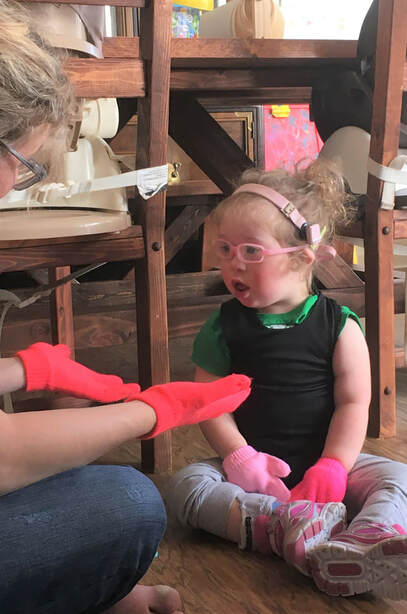We provide meaningful information, compassionate support, and practical assistance for families in their homes and community settings.
|
We are beyond fortunate and grateful to have been assigned A Shared Vision as our vision provider through our local Denver County early intervention program. Our son's vision diagnosis has been very scary, and so far in just a few short months a reassurance and much needed confidence has been gained with A Shared Vision. We absolutely love and appreciate our Vision Provider and are so lucky she's the vision teacher in our lives!” One Happy Parent Support, Hope, Love
Families with concerns about their child’s vision need meaningful information, compassionate support and practical assistance.
A Shared Vision is here to help! Our goal is to ensure that all families of children with visual impairments, from birth to age three, receive essential early intervention services specific to blindness, deaf-blindness, visual impairment and vision concerns from a community of highly skilled and collaborative professionals. Our team of experienced and caring Early Intervention Teachers of the Visually Impaired (EI-TVIs) works closely with families – in their homes and community settings – to nurture the strengths of each child and build skills for lifelong success. By building trust with our families and their early intervention teams, A Shared Vision has become the leading provider of in-home and community vision services in Colorado. |
Strategies to Help Your Child Thrive
Teachers with A Shared Vision provide educational services that are family focused, strengths based, and developmentally appropriate.
We pride ourselves on growing strong and meaningful partnerships with families and all those who support their child. Our services include a broad range of support provided in a variety of settings including home and community sites – libraries, playgrounds, day care centers, schools, doctors’ offices and more. We begin by helping families understand their child’s specific visual diagnosis and the effect it will have on early learning. We teach caregivers strategies for interacting with their child and how to provide a variety of multi-sensory learning experiences for a child to gain access to the visual world. We model how children learn through play so families understand how to incorporate learning into everyday routines such as mealtime and bath time. We foster emergent literacy through singing songs, story-telling, exposure to print, braille and other pre-reading activities. When a child turns three, we assist families through the transition process from Early Intervention (Part C IDEA) to school-based programming (Part B IDEA). |
Our Services
|
EI Vision Services and Vision Therapy:
|

